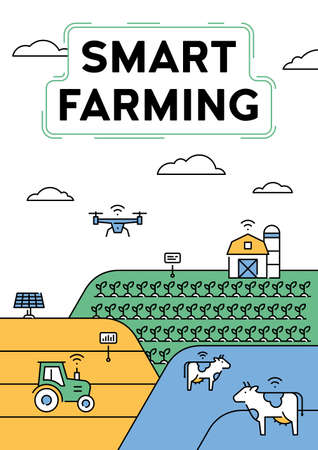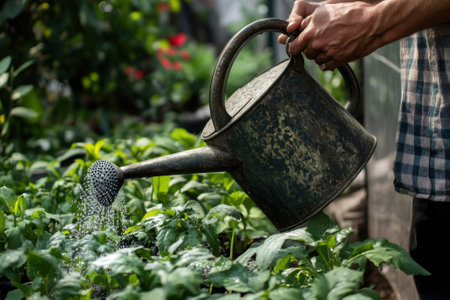1. Introduction: The Need for Smart Water Management in India
India, a nation blessed with diverse climates and abundant natural resources, paradoxically faces severe water challenges that touch nearly every aspect of daily life. From the arid stretches of Rajasthan to the bustling metros like Mumbai and Bengaluru, the issue of water scarcity is increasingly becoming a reality for millions. Urbanisation, population growth, erratic monsoons, and outdated infrastructure have all played their part in creating a scenario where both shortage and wastage of water coexist. In many cities, leaky pipes and inefficient distribution systems result in a significant portion of treated water never reaching end users—a classic case of “jal hai par milta nahi” (there is water, but it doesnt reach us). Meanwhile, rural communities often rely on unpredictable groundwater sources or distant rivers, leading to frequent droughts and crop failures. The Indian context is unique: cultural practices, regional disparities, and economic factors make blanket solutions ineffective. There is an urgent need to adopt innovative technologies that can address these challenges holistically. This is where smart water management—powered by IoT (Internet of Things)—emerges as a promising solution. By enabling real-time monitoring, data-driven decision-making, and timely interventions, IoT-based systems hold the potential to revolutionise how India manages its precious water resources and ensures “Har Ghar Jal” (water in every home) becomes a sustainable reality.
2. IoT in the Indian Context: Opportunities and Cultural Relevance
The Internet of Things (IoT) is transforming daily life globally, but its potential is especially significant in India, where water management remains a critical concern for millions of households and communities. In simple terms, IoT refers to devices embedded with sensors and connectivity that allow them to collect, share, and analyze data, often automating tasks that previously required manual intervention. When it comes to water management, this technology can bridge the gap between traditional practices and modern needs.
How IoT Fits into Indian Homes, Apartments, and Cities
In Indian homes, especially in urban apartments or gated societies, water supply is often unpredictable. Residents rely on borewells, municipal supply, or private water tankers—each with its own set of challenges. IoT-powered smart meters and sensors can monitor real-time water levels in overhead tanks and underground sumps, send alerts when refilling is needed, and even automate pumping based on actual usage patterns. This not only saves time but also prevents wastage—a crucial aspect considering Indias growing water scarcity.
Cultural Relevance: Adapting to Local Infrastructure and Habits
Unlike Western countries where piped water supply is consistent, Indian water management involves juggling between different sources throughout the day. The use of borewells and reliance on water tankers are common in both cities and smaller towns. An IoT-based system respects these realities by integrating with existing infrastructure rather than replacing it entirely.
| Use-Case | Traditional Practice | IoT-Enabled Solution |
|---|---|---|
| Borewell Monitoring | Manual checking of water levels; risk of dry running pumps | Sensors alert users before borewell runs dry; automated pump control |
| Water Tanker Management | Guesswork for scheduling; potential for over-ordering or shortages | Smart meters track consumption; timely alerts for tanker bookings |
| Apartment Water Usage | No individual usage tracking; disputes over bills or wastage | Real-time consumption data per flat; transparent billing and conservation tips |
Relatable Example: Borewells in Bengaluru Societies
For instance, many housing societies in Bengaluru depend on borewells that occasionally run dry during summer. With an IoT-based solution installed, society managers receive instant notifications about decreasing water levels so they can take timely action—either by switching to municipal supply or scheduling a tanker—minimizing inconvenience for residents.
This seamless blend of cutting-edge technology with everyday Indian realities shows why IoT-based smart water management is not just possible but truly practical in India’s unique context.

3. Design and Components of an IoT-Based Water Management System
When it comes to developing a robust and effective IoT-based smart water management system for India, the design must take into account not just advanced technology, but also local context and daily realities. Here are the core components and design considerations that make such a system practical and impactful for Indian communities.
Key Elements for Smart Water Management
Smart Sensors
At the heart of any IoT-driven solution are smart sensors that monitor various parameters such as water level, pressure, and consumption. These sensors are strategically placed in overhead tanks, borewells, municipal supply lines, or even handpumps found in rural areas. Their real-time data enables early detection of leaks or wastage, which is crucial in regions where every drop counts.
Water Quality Monitors
Given the diverse sources and variable quality of water across India—from Himalayan rivers to groundwater in Tamil Nadu—integrating water quality monitors is essential. These devices detect contaminants like TDS (total dissolved solids), heavy metals, and bacterial presence, ensuring that alerts are sent before unsafe water reaches households. Such proactive measures align with local health priorities and government missions like Jal Jeevan Mission.
Flow Meters
Flow meters track the quantity of water being delivered or used. This is particularly relevant in urban apartment complexes as well as in community tap systems commonly seen in small towns and villages. Accurate flow measurement helps prevent disputes over water allocation—a common issue during peak summer months—and supports fair billing for municipal services.
Real-Time Mobile Notifications
No matter how sophisticated the backend system is, its true value lies in real-time communication with users. Mobile notifications (in English, Hindi, or regional languages) inform residents about abnormal usage patterns, upcoming supply timings, or contamination events. Considering Indias high mobile penetration—even in Tier 2 and 3 cities—this feature ensures maximum reach and engagement.
Cost Effectiveness & Weather Compatibility
Indias climate varies from arid Rajasthan to humid Kerala; hence, all hardware components must withstand temperature extremes, monsoon rains, and dust storms. Locally sourced components and rugged designs help lower costs while ensuring durability. Moreover, by leveraging open-source platforms like Raspberry Pi or Arduino for basic installations, even smaller municipalities or panchayats can afford to pilot these systems without straining their budgets.
Conclusion
The combination of intelligent sensors, vigilant monitoring, real-time alerts, and weather-resistant hardware forms a foundation tailored to India’s unique needs. By focusing on both high-tech capability and ground-level usability, IoT-based smart water management systems can drive meaningful change—from city apartments to remote rural hamlets—making every litre count.
4. Implementation Case Studies: Indian Success Stories
India’s journey towards smart water management is best reflected in real-world case studies where IoT-based solutions have transformed water access and efficiency. From bustling cities to remote villages, several pilot projects showcase how technology, local partnerships, and cultural adaptation have led to measurable improvements.
Urban Innovation: Bengaluru Smart Water Grid
Bengaluru, known for its rapid urbanisation and water scarcity issues, has adopted an IoT-enabled smart water grid in select wards. Through collaboration between Bruhat Bengaluru Mahanagara Palike (BBMP), tech start-ups, and local NGOs, sensors were installed to monitor water flow and quality in real-time. Alerts in Kannada ensured quick response by field engineers. The system reduced leakage losses by 30% within the first year and improved customer satisfaction among resident associations.
Rural Success: Maharashtra’s Jal Mitra Project
In rural Maharashtra, the “Jal Mitra” initiative empowered women self-help groups (SHGs) with IoT-based water level sensors for village tanks. Training sessions were conducted in Marathi, enabling local champions to interpret data on their mobile phones and make timely decisions about pump operations. This not only saved electricity but also fostered community ownership.
Key Outcomes from Case Studies
| Location | Partners | Local Language Use | Main Benefits |
|---|---|---|---|
| Bengaluru (Urban) | BBMP, Start-ups, NGOs | Kannada alerts & dashboards | Leakage reduction, better response time |
| Maharashtra (Rural) | SHGs, Panchayats, Tech providers | Marathi training & support | Community engagement, energy savings |
| Tamil Nadu (Semi-urban) | PWD, Academic Institutions | Tamil voice assistants | Improved billing accuracy, awareness campaigns |
On-Ground Adoption Factors
The success of these projects often hinges on tailoring interfaces to local dialects (Kannada, Marathi, Tamil), forming public-private-community partnerships, and ensuring grassroots digital literacy. The focus remains on making technology accessible—not just high-tech—so that every drop counts for India’s diverse communities.
5. Challenges and Solutions: Bridging the Gap in Indian Deployment
Implementing IoT-based smart water management systems across India presents unique challenges that must be addressed for successful adoption. The Indian context is distinct, with hurdles such as patchy internet connectivity, affordability concerns for both urban and rural populations, and varied levels of digital literacy. Tackling these issues requires thoughtful strategies tailored to local realities.
Poor Internet Connectivity
Many parts of India, especially remote villages and semi-urban regions, still lack reliable high-speed internet. This can hinder real-time data transmission from IoT sensors. One practical workaround is the use of hybrid communication models—combining GSM networks, LoRaWAN, and offline data logging. When internet service is available, devices can batch-upload data to central servers, ensuring continuous monitoring without depending on constant connectivity.
Affordability and Scalability
Cost remains a significant barrier for widespread deployment. Many communities operate under tight budgets, making high-tech solutions seem out of reach. Here, local manufacturing of IoT components and open-source software platforms can bring costs down. Pilot programs supported by government subsidies or CSR initiatives from private companies help demonstrate value at lower risk. Additionally, modular solutions allow gradual scaling based on need and available funds.
User Literacy and Adoption
The diversity in educational backgrounds across India means some users may find new technology intimidating. User-friendly interfaces with regional language support are crucial. Visual dashboards and mobile apps designed with simple icons make it easier for anyone—from municipal workers to farmers—to understand system outputs. Hands-on training sessions, peer learning groups, and community champions foster greater confidence and adoption at the grassroots level.
The Role of Government and NGOs
Government agencies play a pivotal role in setting standards, providing funding, and creating awareness about smart water management technologies. Partnerships with NGOs can bridge last-mile gaps by facilitating outreach, user training, and ongoing technical support in underserved areas. Schemes like Jal Jeevan Mission and Swachh Bharat Abhiyan already create a foundation for integration with IoT systems to ensure sustainable water access for all.
Towards Inclusive Smart Water Management
Bridging the gap between technology potential and real-world deployment in India requires a blend of innovation, affordability, local engagement, and institutional support. By acknowledging challenges openly and working collaboratively on solutions, India can pave the way for inclusive smart water management that benefits every community—urban or rural alike.
6. The Road Ahead: Scaling Smart Water Solutions for India’s Future
As India continues its journey towards a digitally empowered society, the expansion of IoT-based smart water management systems presents exciting opportunities to address the nation’s pressing water challenges. Integrating these solutions with ambitious national initiatives like ‘Digital India’ and the Atal Mission for Rejuvenation and Urban Transformation (AMRUT) can set the stage for widespread adoption across urban and rural landscapes.
Aligning with National Ambitions
The Digital India movement is all about leveraging technology to improve governance and everyday life. By linking smart water management projects to this initiative, local authorities and private players can ensure that data-driven water usage becomes part of daily routines in both cities and villages. Similarly, AMRUT’s focus on providing universal access to water supply and improving urban infrastructure makes it a natural partner for scaling up IoT-based solutions nationwide.
Unlocking Everyday Impact
The benefits of scaling smart water systems go beyond technology—they touch the lives of millions. Imagine residents in Chennai or Jaipur receiving real-time alerts about water availability, or farmers in Punjab optimising irrigation through sensor-driven insights. These changes can make water conservation an accessible habit, not just a government directive. Such systems can also empower women, who often bear the brunt of water scarcity, by reducing the time spent fetching water and improving household health.
Tackling Scalability Challenges
While pilot projects in select Indian cities have shown promising results, taking these innovations nationwide requires overcoming hurdles like funding constraints, digital literacy gaps, and diverse local needs. Partnerships between government bodies, start-ups, NGOs, and community leaders will be crucial to bridge these gaps. Tailoring solutions to regional languages and customs can further boost adoption rates, making sure no community is left behind.
A Vision for the Future
Looking ahead, India has a unique chance to become a global leader in smart water management by harnessing its technological prowess and youthful population. With robust policy support and grassroots engagement, IoT-based systems can transform how every Indian household values and uses water—turning everyday conservation into a shared national mission. By scaling these solutions thoughtfully, we can secure a more sustainable future where clean water is available to all, every day.

